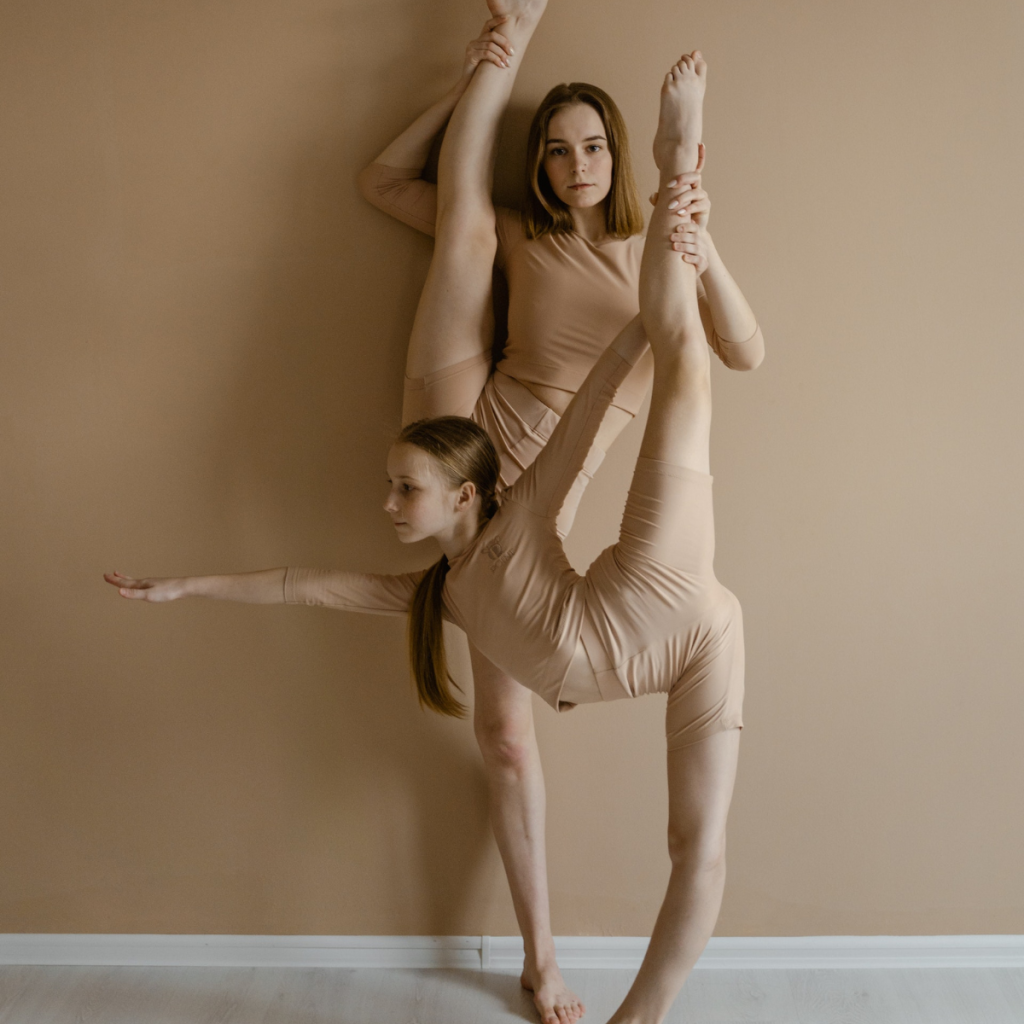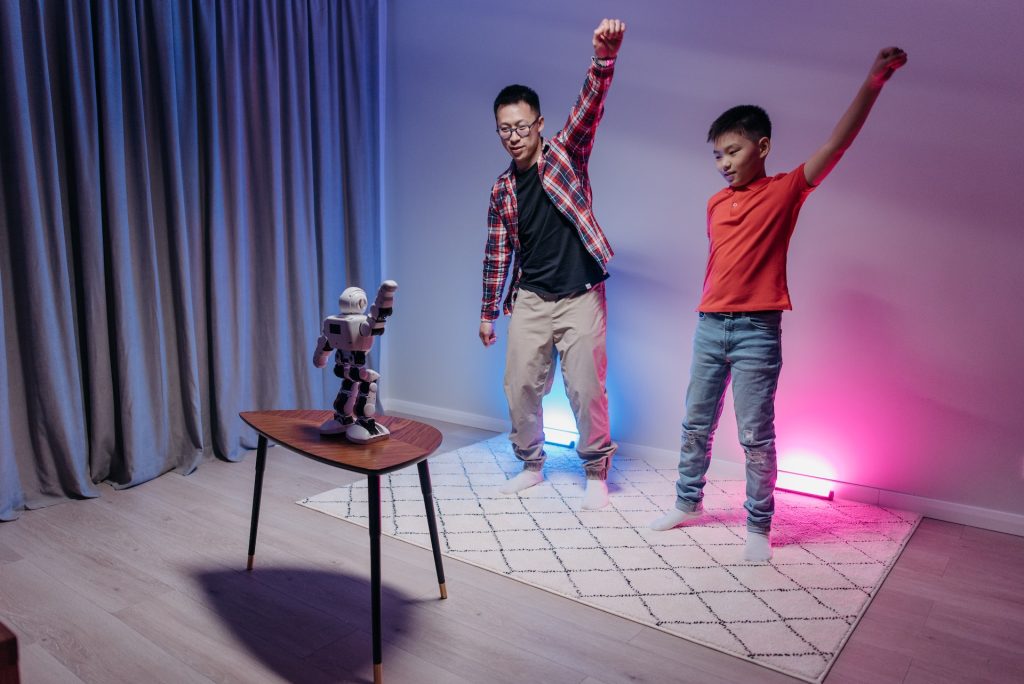Discover effective strategies and tips for teaching dancing to 11-12 year old children.
How to Teach Dancing to 11-12 Year Old Children
Are you ready to hit the dance floor with a group of eager 11-12 year olds? Teaching dance to preteens can be a delightful adventure filled with energy, excitement, and plenty of toe-tapping fun. In this article, we will explore various strategies and techniques to help you become the dancing maestro that these young performers need. So, put on your dancing shoes and let’s get started!
Understanding the Physical Development of 11-12 Year Olds

Before we dive into the world of dance steps and choreography, it’s essential to understand the physical capabilities and limitations of 11-12 year olds. At this age, children are experiencing rapid growth spurts and refining their motor skills. Their bodies are becoming more coordinated, and they have increased strength and flexibility.
During this stage of development, 11-12 year olds are often full of energy and enthusiasm. They are eager to explore new movements and challenge themselves physically. As dance educators, it is important to harness this energy and provide them with opportunities to develop their skills and express themselves creatively.
However, it’s important to remember that they are still developing and may have certain limitations. Some children may be more flexible than others, while some may struggle with coordination. It’s crucial to respect their individual abilities and adjust your teaching accordingly. By creating a supportive and inclusive environment, you can help them build confidence and reach their full potential.
Encouraging them to stretch and warm up before each session will not only help prevent injury but also improve their overall performance. Warm-up exercises increase blood flow to the muscles, making them more pliable and less prone to strains or sprains. They also prepare the body for the demands of dance, helping to enhance flexibility and range of motion.
Importance of Warm-up and Cool-down Exercises
Warm-up and cool-down exercises are like magical potions that prepare their bodies for dance and help prevent those dreaded muscle strains. Get creative with warm-up activities that get their hearts pumping and muscles stretched. Allow them to groove to some upbeat tunes, do jumping jacks, or even mimic animal movements to set the mood and get them excited.
Cooldown exercises, on the other hand, are like a calming breeze after an intense performance. They help the body gradually return to its resting state, reducing the risk of muscle soreness and promoting recovery. Encourage them to take a few moments to stretch their muscles, catch their breath, and reflect on their dance experience.
Remember, a good warm-up and cooldown routine is the key to happy and healthy dancers. It sets the tone for the class, prepares their bodies for movement, and helps them develop good habits that will benefit them throughout their dance journey.
Choosing the Right Dance Style for Preteens
The world of dance is vast and vivacious, with countless styles and rhythms to choose from. As a dance teacher, it’s important to help your preteens find a dance style that suits their personality and interests. After all, dancing is all about self-expression and exploring their unique talents and abilities.
Dance is not just a physical activity; it is a form of art that allows individuals to express themselves in ways words cannot. It is a way to communicate emotions, tell stories, and connect with others. By helping your preteens find the right dance style, you are giving them a platform to express themselves and discover their true potential.
Popular Dance Styles for Preteens
When it comes to dance styles that appeal to preteens, there are a few tried and true favorites. Jazz, hip-hop, contemporary, and ballet often make the top of the list. These styles offer a fantastic blend of upbeat movements, artistic flair, and room for individual expression. Encourage your students to try out different styles to see what resonates with them the most.
Jazz dance, with its energetic and syncopated movements, allows preteens to explore their creativity and musicality. It combines elements of ballet, modern dance, and African-American rhythms, creating a unique and dynamic style.
Hip-hop, on the other hand, is all about rhythm, style, and self-expression. It originated from street dance and has evolved into a popular dance form that incorporates elements of popping, locking, and breaking. Preteens who are drawn to urban culture and enjoy the freedom of movement will find hip-hop a perfect fit.
Contemporary dance, with its fluid and expressive movements, allows preteens to explore their emotions and push the boundaries of traditional dance. It combines elements of ballet, modern dance, and improvisation, creating a style that is both captivating and thought-provoking.
Ballet, the foundation of all dance styles, offers preteens a chance to develop discipline, grace, and strength. It focuses on precise movements, proper body alignment, and storytelling through dance. Ballet provides a solid technical foundation that can be applied to other dance styles.
Factors to Consider When Choosing a Dance Style
While popular dance styles are a great starting point, it’s important to consider a few factors when helping your preteens choose the right style for them. Take into account their physical abilities, coordination, and personal preferences. Each dance style has its own unique demands, so make sure to guide them in selecting a style that they will truly enjoy.
Physical abilities play a crucial role in dance. Some styles require more flexibility, while others focus on strength and endurance. Assess your preteens’ physical capabilities and guide them towards a dance style that aligns with their strengths and challenges them to grow.
Coordination is another important factor to consider. Some dance styles, like ballet, require precise coordination of the entire body, while others, like hip-hop, may focus more on isolations and individual body parts. Help your preteens identify their coordination strengths and choose a dance style that complements their natural abilities.
Personal preferences should also be taken into account. Talk to your preteens about the music they enjoy, the movements that excite them, and the emotions they want to express through dance. By understanding their preferences, you can guide them towards a dance style that resonates with their individuality.
Remember, the goal is not just to find a dance style for your preteens, but to help them discover a lifelong passion. Encourage them to explore different styles, attend performances, and embrace the joy of movement. Dance has the power to transform lives, and by guiding your preteens towards the right dance style, you are opening doors to a world of self-discovery and artistic expression.
Creating an Engaging Dance Lesson Plan
Now that you’ve got a group of enthusiastic preteens ready to hit the dance floor, it’s time to create a lesson plan that keeps them engaged and excited throughout each session. Balance is key here – you want to create a learning environment that is both educational and fun-filled.
When designing your dance lesson plan, it’s important to consider the diverse interests and abilities of your preteen dancers. Incorporating a variety of dance styles and techniques will not only keep them engaged but also help them develop a well-rounded skill set. From ballet to hip-hop, jazz to contemporary, expose your students to a wide range of dance genres, allowing them to explore different movements and find their own unique style.

Balancing Fun and Learning in Dance Lessons
Avoid turning dance lessons into a monotonous routine by infusing fun elements into every step of the way. Add interactive games, challenges, or even small competitions into your lesson plan. For example, you could divide the class into teams and have them create their own dance routines, incorporating specific moves or themes. This not only encourages teamwork but also sparks their creativity and allows them to take ownership of their learning.
Another way to keep the fun alive is by incorporating props into your dance lessons. Whether it’s colorful scarves, ribbons, or even hula hoops, props can add an extra element of excitement and playfulness to the dance routine. Encourage your preteens to experiment with the props, incorporating them into their movements and creating visually captivating performances.
Let them explore their creativity and make space for their personalities to shine through. Remember, dancing should be an exhilarating and joyous experience for all!
Incorporating Music and Themes Preteens Love
Music has a magical way of captivating the hearts and souls of preteens. Introduce them to catchy tunes and popular hits that they can relate to. Consider creating a playlist that includes a mix of current chart-toppers and timeless classics. This will not only keep them excited but also expose them to different musical styles and rhythms.
Theme-based dance sessions can also add an extra layer of excitement. Have a luau-themed class where the dancers can learn tropical-inspired movements and wear vibrant costumes. Or why not have a superhero-inspired routine, where they can channel their inner heroes and heroines through powerful dance moves? Let their imaginations run wild and watch their enthusiasm soar.
Remember to provide opportunities for your preteens to showcase their skills and progress. Whether it’s a mini-performance for their parents or a dance showcase at a local community event, giving them a platform to shine will boost their confidence and motivate them to continue their dance journey.
Teaching Dance Techniques and Movements
As a dance teacher, it’s your mission to break down complex dance moves into manageable chunks that preteens can grasp and master. By employing effective teaching techniques, you can ensure that each student becomes a confident dancer.
Breaking Down Complex Dance Moves
Complex dance moves can be overwhelming for preteens, so it’s crucial to break them down into simpler steps. Demonstrate the moves slowly, ensuring that each student understands the mechanics and rhythm. Practice repetition and provide individual attention when necessary. Remember, patience and encouragement are your superpowers.
Encouraging Practice and Repetition
Practice makes progress! Encourage your preteens to practice outside of the dance studio. Share instructional videos or written choreography with them, and suggest incorporating dance into their daily routines. Dancing while brushing their teeth or waiting for the bus can help them develop muscle memory and further improve their skills.
Building Confidence and Self-Expression Through Dance
One of the most rewarding aspects of teaching dance to preteens is watching them develop confidence and find their unique voice through movement. As a dance teacher, you have the power to create a supportive and nurturing environment that fosters their self-expression.
Fostering a Positive and Supportive Environment
Create a dance studio where preteens feel safe to explore and take risks. Celebrate their achievements, big and small, and provide constructive feedback. Encourage them to support and uplift one another, fostering a sense of camaraderie and teamwork. When they feel accepted and supported, their confidence will flourish.
Encouraging Individuality and Creativity in Dance
Dancing is a beautiful art form that allows individuals to embrace their own uniqueness. Encourage your preteens to express themselves authentically and explore their own creative ideas. Provide opportunities for them to choreograph their own routines or make small modifications to existing ones. Let their spirits shine, and their dance moves will become a true reflection of themselves.
So, dance teacher extraordinaire, armed with these insights and strategies, you are now ready to embark on your journey of teaching dance to 11-12 year old children. As you navigate the twists and turns of dance education, remember to stay true to your playful nature, adapt your teaching techniques to each unique dancer, and most importantly, savor every moment of this captivating and joyous adventure!



